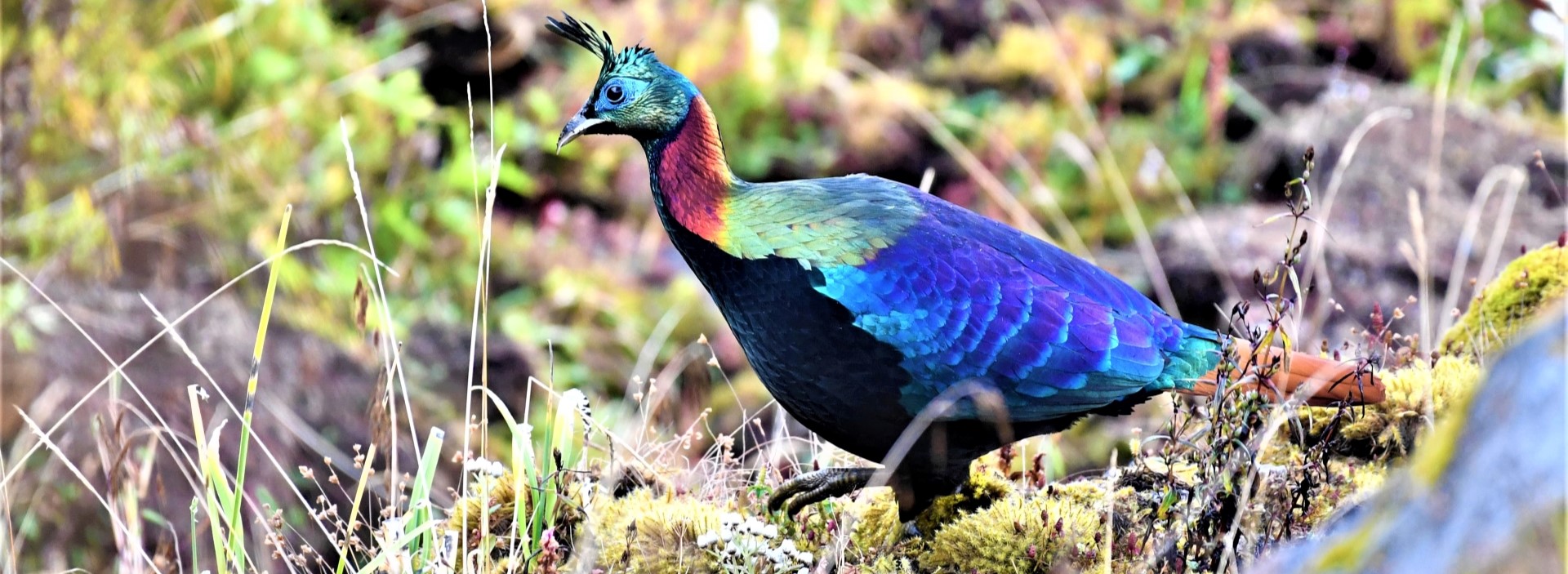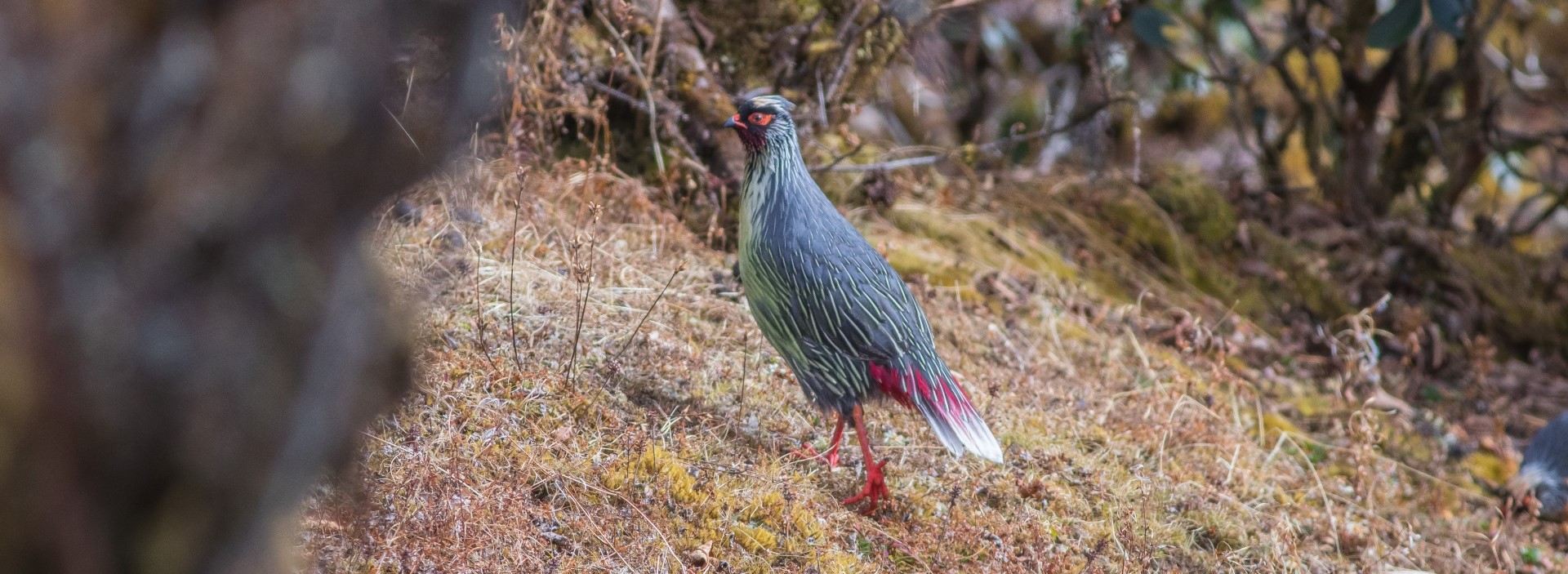Pangolakha Wildlife Sanctuary : Zuluk Phadamchen
The famous silk route is not only famous for ordinary tourists, but also for Indian Bird watchers and bird photographers. The main advantage is, that the entire birding would be done from a vehicle, and hardly one has to walk. Thus the ease of birding is there. In north-east India or the Himalayas people think that they would have to make tough hiking, but no, not here. You would experience the most easy-going birding, and that too where you see the rare skulker birds in the open. Since the spiral roads are there against the hill slopes thus you always get a vantage point for this bird watching and bird photography in Sikkim. However, if someone prefers to explore the jungle trails and rough nature walks, those options are also there.
| Day-1 | The birdwatchers for the Sikkim tour would be picked up from Bagdogra Airport or Darjeeling, on the way some morning meals would be served. By noon, if we manage to reach Rongli, here we would have our lunch. Post lunch, for the entire afternoon we would spend bird photography in east Sikkim, all the way up till we are at our homestay. |
|---|---|
| Day-2 to 5 |
For these four full days, we would be birding on different birding trails along the Pangolakha Wildlife Sanctuary. Throughout this varied landscape, we would cover, Blood Pheasant, Himalayan Monal, Satyr Tragopan, Kalij Pheasant, Hill Partridge, Great Parrotbill, Fulvous Parrotbill, Himalayan Owl, Himalayan Shortwing, Lesser Shortwing, etc. There would be 11 species of Laughingthrushes, and five more species of owl, when we would go out for nocturnal bird watching in Zuluk. Between Phadanchen-Nimachen and Lingtham there are multiple birding trails; which we would explore for miscellaneous Timaliidae babbler species. In the higher elevation, Blyth’s Pipit, White-browed Rosefinch, White-browed Bush-robin, Alpine Accentor, Altai Accentor, Snow Pigeon, Red-billed Chough, etc would be our major targets. All four major pheasant species from Sikkim - Blood Pheasant, Himalayan Monal, Satyr Tragopan, and Kalij Pheasant can be best seen from Pangolakha WLS. Some of the best experiences of birding in Sikkim would be when you come in the spring-summer months of March to June. In these four months, all the birds would be in breeding plumage and they respond and show up nicely on rhododendron flowers. Throughout the entire region, Rhododendron birch and bamboo thicket birds are abundant in number. |
| Day-6 | On the last session of this bird photography tour in east Sikkim, we would spend time in lower elevations along Lingtham Khola, Agamlok, and Rongli-Chuzachen area for birding. We would depart from Rongli when the sun is high and bird activity is less. After having a nice Sikkimese lunch, we would go ahead to Siliguri or Bagdogra. |
Inclusion
- Pangolakha WLS offers high-end 4* resorts to mid-budget stay plans in 2* homestays to forest rest houses (or FRH).
- Stay plans on offer can be single-occupancy basis or double-occupancy basis, as agreed upon final itinerary
- The food plan can be EP, AP, CP, or MAP, whichever the guests look for and is suitable for them
- All surface transfer by Innova Crysta, Xylo, Bolero, or the car of the birder's choice
- Bird tour guide for the entire duration of the tour with all necessary types of equipment - Binoculars, Digiscope, etc.
- All professional taxes
Exclusions
- Anything that had not been mentioned in the inclusion of the itinerary
- Arrival and departure from the hometown
- Any VISA Charges and Travel Insurance
- Any food items or beverages that is additional



